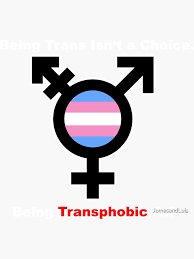Gender dysphoria is a term that many people might have heard of, but it’s often wrapped in myths and misunderstandings. At its core, gender dysphoria refers to the emotional distress that can arise when a person’s gender identity does not align with the sex they were assigned at birth. This can lead to feelings of confusion, anxiety, and sadness, making it important to seek help. Let’s dive into what gender dysphoria therapy entails and why it’s an essential component of navigating this complex experience.
What is Gender Dysphoria? Let’s Break It Down!
Gender dysphoria can manifest in various ways, affecting individuals differently based on their unique experiences and backgrounds. For some, it might involve a strong desire to be recognized as a different gender, while others may feel uncomfortable with their physical characteristics or societal expectations. It’s crucial to understand that this is a real and legitimate experience, not simply a phase or trend. The distress that accompanies gender dysphoria can significantly impact mental health, relationships, and overall quality of life.
The journey of understanding gender dysphoria often begins with self-reflection and exploration. People might find themselves questioning their gender identity as they navigate societal norms and personal feelings. This exploration can be daunting, and the emotional toll can lead to confusion. Recognizing gender dysphoria as a valid experience paves the way for individuals to seek support and engage in meaningful conversations about their identity.
Understanding the Importance of Gender Dysphoria Therapy
Therapy plays a fundamental role in helping individuals cope with the challenges associated with gender dysphoria. A qualified therapist can provide a safe and supportive space for individuals to explore their feelings and experiences. Therapy can also offer tools and strategies for managing anxiety, depression, and the stress of navigating societal expectations. For many, this is the first step towards self-acceptance and empowerment.
Additionally, gender dysphoria therapy can facilitate the process of transitioning, if that is the path someone chooses. This can include exploring hormone therapy or surgical options, as well as navigating social changes. The support of a therapist can be invaluable in helping individuals make informed decisions about their bodies and identities, ensuring they feel confident in their choices.
Common Signs and Symptoms of Gender Dysphoria
Identifying gender dysphoria can be complex, but there are common signs that individuals may experience. Feelings of disconnect from one’s physical body, distress over assigned gender roles, and a persistent desire to be treated as a different gender are all indicators. People may also express discomfort with their secondary sexual characteristics or exhibit a strong wish to change their name and pronouns.
Moreover, emotional symptoms can include anxiety, depression, or feelings of isolation. Many individuals report experiencing social withdrawal or a lack of interest in activities they once enjoyed. Recognizing these signs is crucial, as it can lead to seeking out professional help and ultimately foster a sense of community and belonging.
Types of Therapy for Gender Dysphoria: What to Expect
When it comes to therapy for gender dysphoria, various approaches can be beneficial. Cognitive-behavioral therapy (CBT) is a popular option, helping individuals challenge negative thought patterns and develop coping strategies. Supportive therapy focuses on providing empathy and understanding, allowing individuals to process their experiences in a safe environment.
Another effective approach is affirming therapy, where the therapist actively supports and validates the client’s gender identity. This can involve exploring feelings surrounding transitioning, discussing social integration, and working through family dynamics. Each therapeutic style has its benefits, and understanding what to expect can help individuals feel more comfortable in their journey.
How to Choose the Right Therapist for You
Selecting the right therapist is an essential step in the healing process. Look for professionals who specialize in gender identity issues and have experience working with individuals experiencing gender dysphoria. It can be helpful to read reviews, ask for recommendations, and consider their qualifications and approach to therapy.
Additionally, a good therapeutic relationship is built on trust and openness. It’s important to find someone with whom you feel comfortable sharing your thoughts and feelings. Don’t be afraid to schedule consultations with multiple therapists to see who you connect with best. Remember, your comfort and sense of safety in therapy are paramount.
The Role of Support Groups in the Healing Process
Support groups can be a valuable complement to individual therapy. These groups offer a sense of community, allowing individuals to share their experiences with others who understand their struggles. Being part of a support group can reduce feelings of isolation and provide a platform for discussing challenges and triumphs.
Moreover, support groups often create a space for education and advocacy, helping individuals navigate the complexities of gender dysphoria. Engaging with peers who share similar experiences can foster a sense of belonging and encourage personal growth, making the journey toward self-acceptance feel less daunting.
Navigating Family and Friends During Therapy Journey
Communicating with family and friends about gender dysphoria can be challenging, especially when starting therapy. It’s essential to approach these conversations thoughtfully and with care. Sharing your feelings and experiences can help your loved ones understand what you’re going through, but be prepared for various reactions. Some may be supportive right away, while others may need time to process the information.
Seeking support from a therapist can also be beneficial in navigating these discussions. They can provide guidance on how to approach your loved ones, what to say, and how to handle difficult conversations. Remember, it’s okay to set boundaries and prioritize your emotional well-being during this process.
Success Stories: Transformative Impacts of Therapy
Therapy for gender dysphoria can lead to incredible transformations, empowering individuals to embrace their true selves. Many people report feeling more confident and comfortable in their bodies after engaging in therapy. They often express gratitude for the tools and support they gained, enabling them to navigate societal challenges with resilience.
Success stories highlight not just personal growth but also the broader impacts of acceptance and community. By sharing their journeys, individuals can inspire others facing similar struggles, showing that healing and authentic living are possible. Therapy can be a powerful catalyst for change, opening doors to a more fulfilling life aligned with one’s true identity.
Gender dysphoria therapy is a crucial resource for individuals on their journey of self-discovery and acceptance. It provides the necessary tools, support, and understanding to navigate the complexities of gender identity. Whether through individual therapy, support groups, or family discussions, the path toward healing can lead to a brighter, more authentic future. Remember, you’re not alone, and seeking help is a brave step toward embracing your true self.


